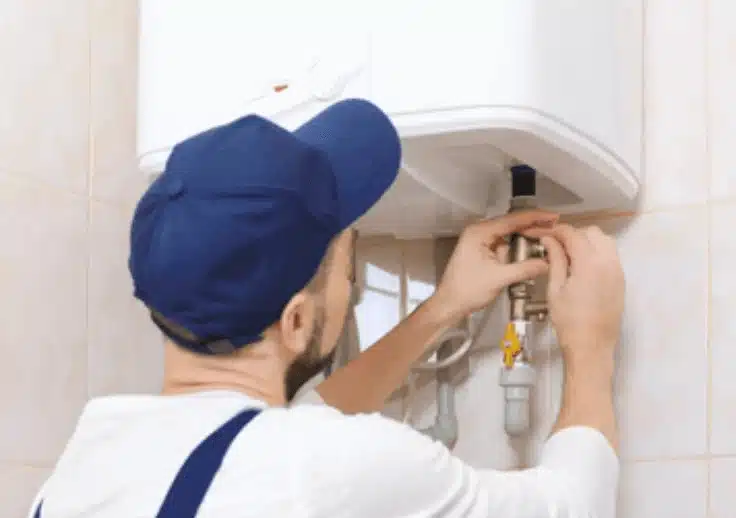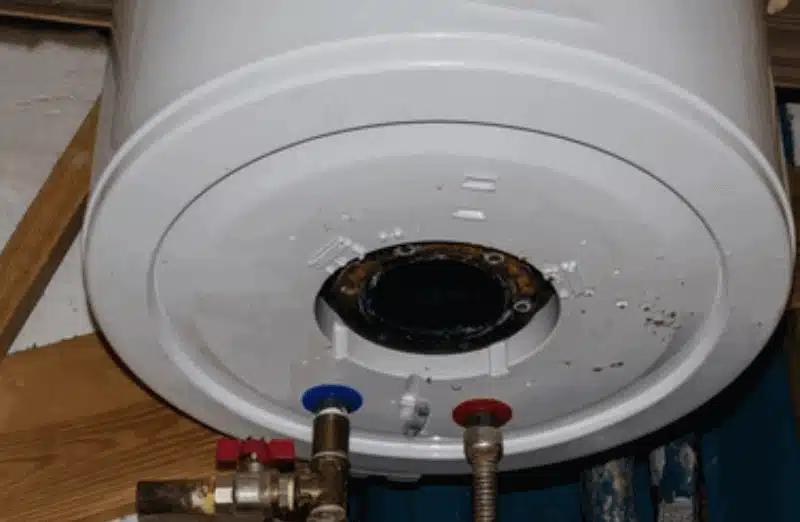When you discover water heater leaking from bottom, it can be a cause for concern. However, it’s important not to panic.
There are quick solutions that can address this issue and prevent further damage to your water heater and your home.
Possible causes of water heater leaks
There are several potential causes for a water heater leaking from bottom.
The role of the drain valve in a l water heater leaking from bottom
The drain valve is an essential component of a water heater.
Its primary function is to allow you to drain the tank to remove sediment buildup or conduct maintenance.
However, if the drain valve is not properly closed or if it is faulty, it can lead to water leaks.
Therefore, it’s crucial to ensure that the drain valve is tightly closed and functioning correctly to prevent any leaks from occurring.
Signs that your water heater is leaking
There are several signs that indicate your water heater may be leaking including:
When you suspect a water heater leak, it’s crucial to identify the source of the leak.
This will help determine the appropriate course of action.
The leak may be originating from the bottom of the water tank, the top of the tank, or even from the temperature and pressure relief valve.
By understanding the source of the leak, you can effectively address the issue and prevent further damage.
If you find that your water heater is leaking from the bottom, there are several immediate steps you can take.
First, turn off the water supply to the water heater. This will help prevent any further water leakage.
Next, turn off the power supply to the water heater if it is an electric water heater, or turn off the gas supply if it is a gas water heater.
This will ensure your safety and prevent any potential accidents.
Finally, contact a professional plumbing service, such as Al Rooter Plumbing Company, to assess the situation and provide the necessary repairs.
A water heater leaking from the bottom can be a cause for concern.
When you notice water pooling near the bottom of your water heater, it is important to take action.
First, you should drain the water from the tank to prevent further water damage.
This can be done by connecting a hose to the drain valve at the bottom of your water heater and emptying the water into a suitable container.
If the leak is significant, you may need to replace the water heater altogether.
Allowing water to continue leaking can cause your water heater to malfunction and potentially cause water damage to your home.
There are several common causes of a water heater leaking from the bottom, such as a crack in the tank or a faulty drain valve.
To maintain your water heater and ensure it has a long lifespan, it is important to address any issues promptly.
Steps to repair a water heater leaking from bottom
Repairing a water heater leaking from bottom may require professional assistance. However, there are basic steps you can take to address the issue before contacting a plumber.
Start by draining the water heater to remove any remaining water.
Then, inspect the drain valve and tighten it if necessary. If the drain valve is damaged, it may need to be replaced.
Additionally, you may need to replace the pressure relief valve if it is faulty.
It is important to consult a professional plumber for an accurate diagnosis and repair.
If the pressure relief valve is the cause of the water heater leak, it will need to be replaced.
The pressure relief valve is a safety feature that releases excess pressure from the tank.
When it malfunctions, water can leak from the valve.
To replace the pressure relief valve, turn off the water supply and the power to the water heater.
Drain the tank and remove the old valve.
Replace it with a new pressure relief valve that is compatible with your water heater model.
Finally, refill the tank and check for any leaks.
If the internal tank of the water heater is damaged and causing the leak, it may be necessary to replace the entire water heater.
Replacing the internal tank is a complex task that requires professional expertise.
A qualified plumber can assess the extent of the damage and recommend the best course of action.
In some cases, it may be more cost-effective to install a new water heater instead of attempting to repair the existing one.
Signs that indicate it’s time to replace your water heater
While some water heater issues can be resolved through repairs, there are indications that it’s time to replace your water heater.
One clear sign is if your water heater is old and nearing the end of its expected lifespan.
Most water heaters have a lifespan of around 10 to 15 years.
If your water heater is constantly requiring repairs or experiencing frequent leaks, it may be more cost-effective to invest in a new water heater.
Other signs include a significant decrease in energy efficiency, rusty water, or loud rumbling noises coming from the tank.
Replacing a water heater involves several steps and should be done by a professional plumber.
Firstly, the old water heater needs to be disconnected and removed.
This requires shutting off the water supply and gas or electricity to the water heater.
Once the old water heater is removed, the new water heater can be installed.
This includes connecting the water supply, gas or electricity, and ensuring proper ventilation.
A professional plumber can guide you through the process and ensure a safe and efficient installation.
Choosing a new water heater
When selecting a new water heater, there are several factors to consider.
The first is the type of water heater you prefer, whether it’s gas, electric, or tankless.
Each type has its advantages and disadvantages, so it’s essential to choose one that suits your needs.
Additionally, consider the capacity of the water heater and its energy efficiency rating.
It’s also worth consulting with a professional plumber to determine the appropriate size and features for your specific household requirements.

To prevent water damage from a leaking water heater, regular maintenance is key.
a professional plumber inspect your water heater annually to check for any signs of potential leaks or damage.
Performing routine maintenance tasks, such as flushing the tank to remove sediment and checking the pressure relief valve, can help maintain the water heater’s efficiency and prevent leaks.
The temperature and pressure relief valve is a critical component of a water heater.
Regularly test the valve to ensure it is working correctly.
The valve should release a small amount of water when you lift the lever, then stop when you release it.
If the valve continues to release water or if it is stuck open or closed, it may require replacement to prevent potential leaks.
If you notice a water heater leaking from bottom, it’s important to take immediate action to minimize water damage.
Start by turning off the water supply to the water heater to prevent any further leakage.
Next, turn off the power supply if it is an electric water heater or the gas supply if it is a gas water heater.
Finally, contact a professional plumber to assess the situation and perform the necessary repairs or replacements.
If you notice new water heater leaking from bottom , it is important to take immediate action.
There are several potential causes for this issue, including a leak in the water heater tank or a problem with the hot water heater itself.
One common cause of new water heater leaking from bottom of the water heater is a cold water supply leak.
In some cases, the tank itself may be leaking and need to be replaced.
If you notice water around your water heater, it is recommended to turn off the power and water supply to the unit.
You may also need to replace the shutoff valve or the T&P valve, which is responsible for releasing pressure inside the tank.
It is important to address a leaking water heater promptly to prevent further damage and potential water damage in your home

